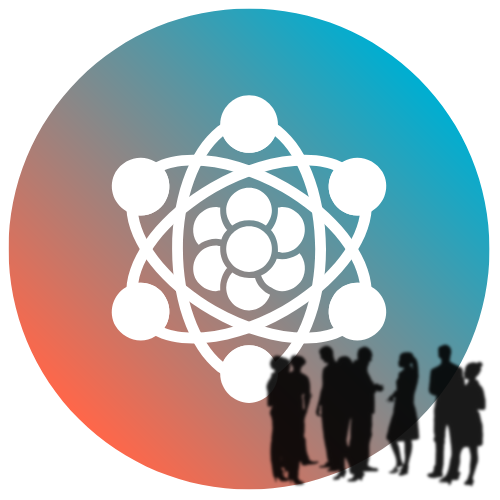Every digital call has a hidden footprint. Behind the convenience of instant voice and video lies a global web of servers, switches, and cooling systems running around the clock. As cloud communication scales to billions of minutes per day, its environmental impact is no longer invisible. The next frontier of VoIP innovation isn’t just faster or smarter — it’s cleaner.
The unseen cost of connection
VoIP networks move sound as streams of data, hopping through routers and data centers before reaching another human’s ear. Each packet demands power — for transmission, computation, and storage. Multiplied across millions of users, those microtransactions of energy add up fast.
According to recent studies on data-center sustainability, global ICT infrastructure already accounts for roughly 2–3 % of worldwide electricity use, and that share could double within a decade. Voice and video traffic are growing faster than most categories because of remote work, AI-driven analytics, and high-definition conferencing.
In other words, the convenience of a “free” internet call isn’t free at all. The question now is how to make those connections worth their energy.
From data centers to distributed efficiency
Traditional cloud architecture relies on massive regional data centers that run continuously to handle unpredictable loads. This centralization simplifies management but wastes energy: servers idle at low utilization, cooling systems work overtime, and power must travel long distances.
The sustainability push in VoIP mirrors what’s happening across the cloud industry — a move toward distributed, intelligent infrastructure. By deploying smaller, regional nodes (edge data centers) that wake up dynamically based on demand, providers can cut idle consumption by double-digit percentages.
Some are even integrating AI-powered orchestration, which predicts traffic spikes and redistributes workloads to the most energy-efficient nodes in real time. It’s the same logic airlines use to optimize fuel routes — applied to bits instead of jets.
Renewable energy meets real-time communication
Hardware optimization is only half the equation. The other half is where the power comes from.
Several major UCaaS and VoIP providers have begun migrating their data centers to renewable grids or partnering with co-location facilities powered by wind, solar, or hydro sources. Google and Microsoft already report near 100 % renewable energy matching for their global clouds; smaller communication platforms are following suit through carbon offsets or renewable-energy credits.
But the most promising step isn’t compensation — it’s localization. Hosting voice workloads closer to renewable sources, like Nordic hydro or Southwest solar, lets providers operate on cleaner electricity by design, not by accounting.
Smarter codecs, smaller footprints
Not all sustainability gains happen at the infrastructure level. Some occur in the invisible math of codecs — the algorithms that compress voice data.
Modern codecs such as Opus and EVS can deliver near-studio quality audio using up to 60 % less bandwidth than older standards. That means fewer bits traveling the same path, translating directly into reduced network energy usage.
Likewise, adaptive bitrate streaming allows VoIP systems to adjust quality automatically to match real-time conditions, avoiding unnecessary data transfer when network strength is low. It’s efficiency as empathy — saving both energy and frustration.
The circular economy of hardware
VoIP providers also face a physical sustainability challenge: endpoints and networking equipment. Desk phones, routers, and headsets still fill landfills when upgraded. Some companies are responding by shifting to softphones and bring-your-own-device policies, extending hardware life cycles and reducing e-waste.
At the enterprise level, recycling and refurbishment programs for networking gear are gaining traction. The principle is simple — extend usability, reduce replacement cycles, and design modular components that can be repaired instead of discarded. Sustainability doesn’t end at the cloud; it extends all the way to the desk.
Measuring green performance
Sustainability only improves when it’s measured. A growing number of VoIP vendors now publish carbon transparency reports detailing energy intensity per call or per gigabyte transmitted. Some enterprises request these metrics during procurement, weighing them alongside cost and uptime SLAs.
We’re likely to see “energy efficiency per call” become a formal performance metric, much like latency or packet loss. It’s not just moral pressure — it’s market differentiation.
The business case for the sustainable cloud
Cleaner communication isn’t a charity project; it’s strategy. Energy-efficient networks lower operational costs, attract eco-conscious clients, and align with emerging ESG reporting requirements. Governments are also offering tax incentives for renewable-powered infrastructure, making sustainability fiscally pragmatic as well as ethical.
In a world where customers increasingly expect companies to mean what they say about responsibility, a greener VoIP backbone becomes part of brand credibility.
The call ahead
The global conversation is only getting louder. Billions of voices, meetings, and messages depend on infrastructure humming quietly beneath them. The task now is to make that hum sustainable.
Energy efficiency in VoIP isn’t about doing less — it’s about doing better. Smarter routing, renewable power, efficient codecs, and longer hardware life all point toward a communications ecosystem that connects without depleting.
If the 2010s were about speed and the 2020s about intelligence, the next decade may belong to sustainability — where every call carries not just a message, but a conscience.

